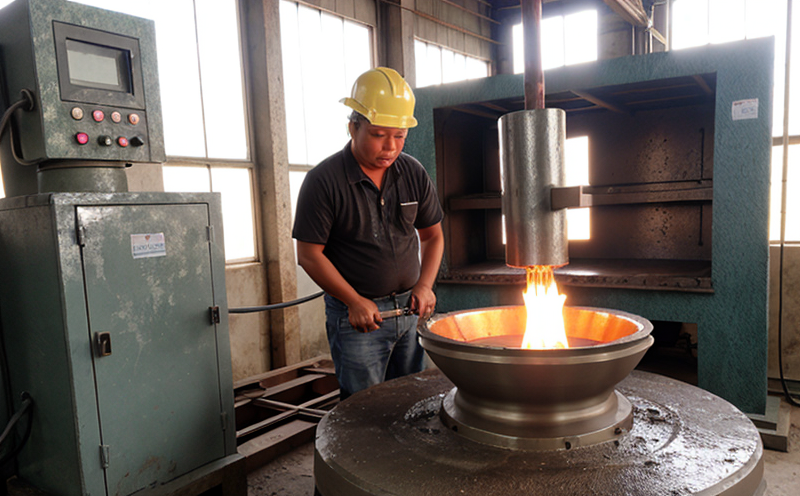ISO 8077 Casting Solidification Analysis Testing
The ISO 8077 standard provides a comprehensive approach to analyzing the solidification process in castings. This testing method is crucial for ensuring that materials and processes meet stringent quality standards, thereby enhancing product reliability and performance.
During casting, metal melts are poured into molds where they cool and solidify over time. The solidification process can significantly impact the final properties of the casting, such as density, microstructure, and mechanical strength. ISO 8077 offers a standardized method to analyze this critical phase, helping manufacturers identify potential issues early in the production cycle.
The testing procedure involves several steps, starting with the preparation of samples from castings or model sections that represent the actual casting geometry. These samples are then subjected to precise thermal and mechanical treatments designed to mimic the real-world cooling conditions experienced during solidification. The primary goal is to observe the formation and growth patterns of dendritic structures within the metal matrix.
The results of this analysis provide valuable insights into various aspects of the casting process, including the rate of heat transfer, nucleation sites, and the overall thermal history. This information can be used to optimize casting parameters such as mold design, cooling rates, and alloy composition.
Accurate solidification analysis is essential for several reasons. Firstly, it helps in identifying defects that may arise due to incomplete or interrupted solidification processes. Secondly, it allows for the optimization of production processes to achieve more consistent product quality. Lastly, it supports compliance with international standards and regulations, which can be crucial for export markets.
For instance, aerospace manufacturers rely on ISO 8077 testing to ensure that their components meet stringent safety requirements. In the automotive sector, this type of analysis is used to improve engine block designs, ensuring better fuel efficiency and lower emissions. The construction industry also benefits from this method by enhancing structural integrity in steel castings.
Understanding the solidification process through ISO 8077 testing enables industries to innovate and refine their processes continuously. By leveraging advanced technologies like computed tomography (CT) scanning, researchers can visualize complex internal structures with high precision. This capability is particularly useful for developing new alloys or exploring unconventional cooling techniques.
It's important to note that while ISO 8077 provides a robust framework, its successful implementation requires expertise in both metallurgy and materials science. Laboratories specializing in this service typically employ experienced technicians who are well-versed in handling sensitive equipment and interpreting complex data sets.
Why It Matters
- Ensures compliance with international standards, enhancing the reputation of manufacturers in global markets.
- Aids in identifying and rectifying defects early in the production cycle, reducing costs associated with rework or scrap.
- Facilitates continuous improvement in casting processes, leading to higher product quality and reliability.
- Supports the development of new materials and alloys by providing a scientific basis for process optimization.
Scope and Methodology
| Step | Description |
|---|---|
| Sample Preparation | Casting samples or model sections are prepared to represent the actual casting geometry. This includes cutting and polishing techniques to ensure accurate observation of solidification processes. |
| Thermal Treatment Simulation | The samples undergo thermal treatments that replicate the cooling conditions experienced during manufacturing. This step is critical for capturing realistic behavior of dendritic structures. |
| Data Acquisition | Various techniques such as optical microscopy, scanning electron microscopy (SEM), and energy-dispersive X-ray spectroscopy (EDX) are used to capture high-resolution images of the solidified structure. |
| Data Analysis | The acquired data is analyzed using specialized software tools to quantify dendrite morphology, growth rates, and other relevant parameters. |
Benefits
- Enhanced Product Quality: Identifies defects early in the production process to ensure higher quality castings.
- Cost Efficiency: Minimizes waste by preventing defective products from reaching further stages of manufacturing.
- Innovation Opportunities: Provides insights that can lead to the development of new materials and improved casting techniques.
- Regulatory Compliance: Ensures adherence to international standards, broadening market access for manufacturers.





